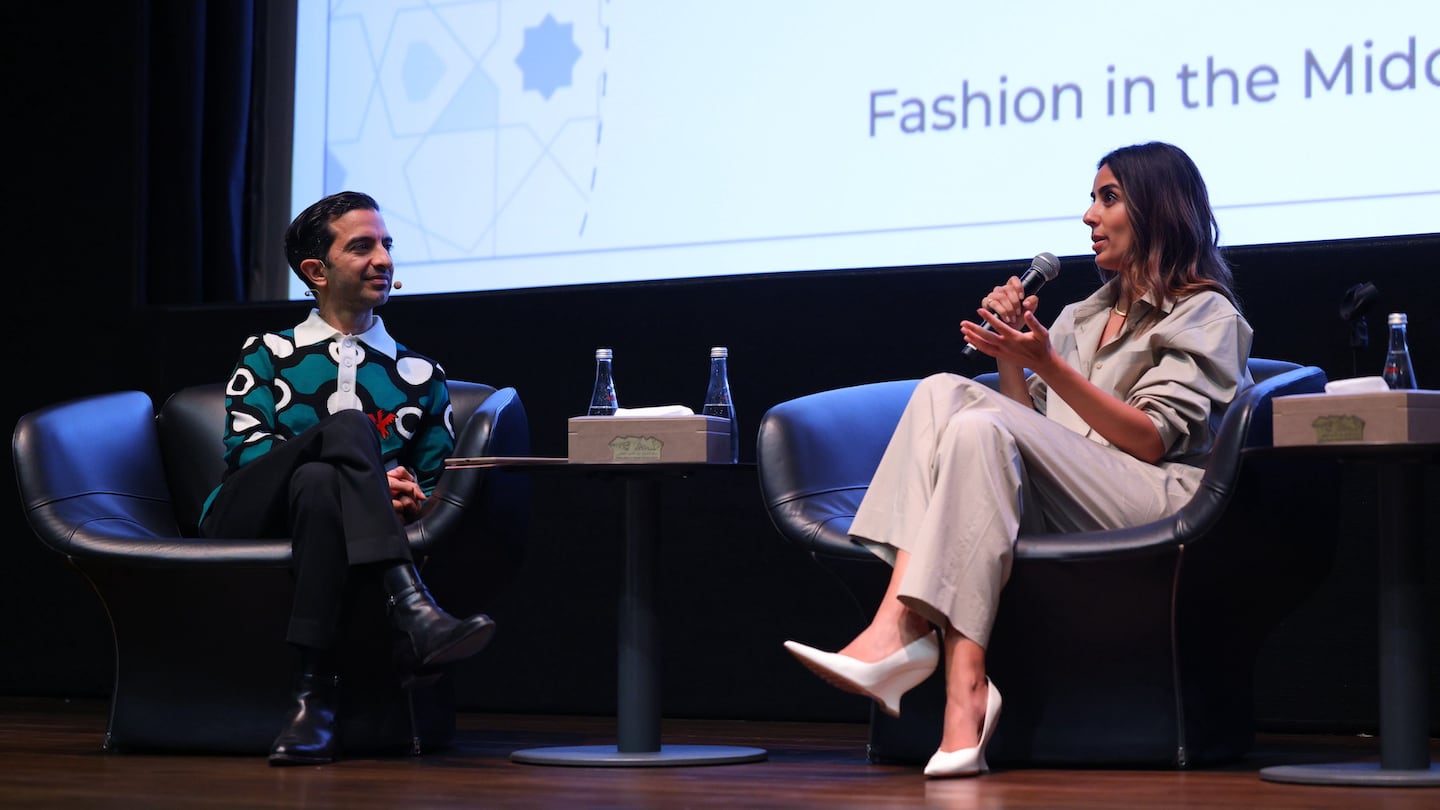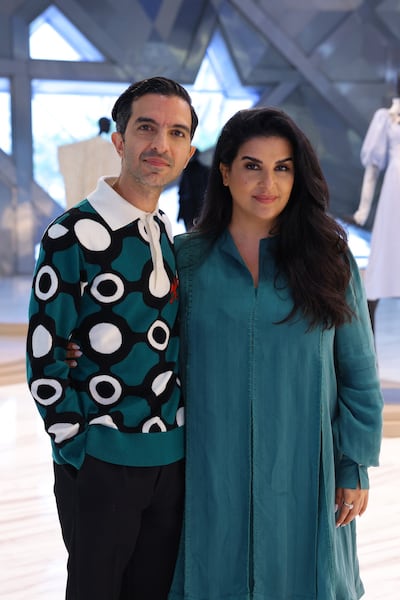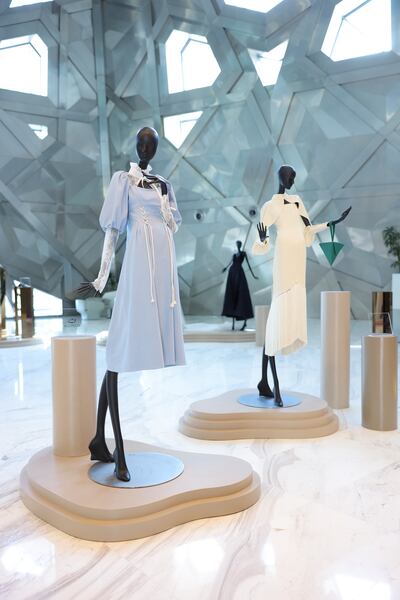
The Business of Fashion
Agenda-setting intelligence, analysis and advice for the global fashion community.

Agenda-setting intelligence, analysis and advice for the global fashion community.

This May, Oud Fashion Talks (OFT) returned for its second year to Kuwait’s Sheikh Jaber Al-Ahmad Cultural Centre, inviting local fashion professionals and international press to thought-leadership panels and educational talks on fashion in Kuwait and the wider region.
Spearheaded by Zainab ALabdulrazzaq, founder of fashion and beauty publication 3oud.com, Oud Fashion Talks launched last year with the ambition of positioning Kuwait to the international fashion map. A country celebrated for its trendsetting status in the region, ALabdulrazzaq seeks to broaden the perception of Kuwait from consumer space to major player and innovator in the business side of fashion.
Opportunities abound in the wider Middle East fashion industry for local and international players — the region was cited in BoF and McKinsey & Co.’s 2023 State of Fashion Report as one of the key markets international brands should look to for prospective growth. Notably, the GDP of the Gulf Cooperation Council (GCC) countries — a region that consists of Bahrain, Kuwait, Oman, Qatar, Saudi Arabia and the United Arab Emirates — is forecast to grow 3.7 percent compared to 1.5 percent for the overall global economy, according to economists at Oxford Economics.
To better understand the rapidly shifting marketing in Kuwait and the Middle East, Oud Fashion Talks welcomed leading Kuwaiti retailers, including Tamdeen Group executives Mohamed Abdulhameed AlMarzook and Avijit Yadav, Omar Beidoun of beauty and jewellery retailer Beidoun, AlOthman owner Rachad Tabiat, and jewellery retailer Duha AlRamadan alongside BoF’s Imran Amed, as well as venture capitalist Mohammed Jaffar, Meta’s Moon Baz, and other leading entrepreneurs from the region, on stage.

“This year has reconfirmed for me that we are focused on the right direction for Kuwait. Now, I want to have more solid solutions for the challenges we have spoken about this year and last year,” says ALabdulrazzaq.
In addition to the talks, OFT also hosted a series of workshops led by the likes of fashion photographer Patrick Sawaya, Kuwaiti designer Bazza Alzouman, and fashion film producer and founder of F2Max, Maxim Sapozhnikov, as well as a gala dinner, an exhibition of local design talent, and a networking event hosted by BoF’s Imran Amed.
Now, BoF summarises key takeaways from the talks.
BoF Insight: Regulatory and social changes — such as women’s increased social freedoms and Gen-Z’s coming of age — are re-shaping some countries and the wider fashion industry in the Middle East. But international brands and retailers should consider each country in the region has its own nuances that should be treated distinctly.
“The [Middle East] customer is becoming more diverse — instead of having unified interests and general direction towards the same way to dress, more diversity is popping up,” said Rawan Maki, BoF’s associate director of research and analysis of BoF Insights, and the lead author of the report, Fashion in the Middle East: Optimism and Transformation, who shared key insights from the report to open the talks.
“When international brands are globally looking at the consumer here, they don’t look at this nuance. [There is] this insistence from global brands on creating these arabesque elements for a customer here, similar to the example of China where there’s a lot of red-themed products,” adds Maki.
“It’s always a kaftan or [...] something in emerald green. While at some point these tropes felt quite normal to the customer here, they are starting to feel more generic and more tired. Also, they don’t really resonate with the way customers are dressing. Through our customer survey of 2000 individuals, we found that the way that brands are thinking of modesty is so different from the way that the customer thinks about modesty.”
We are grouped as the GCC — we have similarities but we’re quite different, and Kuwait is an overlooked, more low-key market.
Consumers want a wider assortment than what is currently on offer in the market — and the insights report found global luxury brands offer 10 to 40 percent more variety in the US than in the Middle East. As a result, international brands should look to offer greater differentiation in the GCC — but also understand how the different countries within the region consume.
“Kuwait is one of the few places [in the Middle East] where people wear shorts to weddings and parties. This has yet to start in other neighbouring countries,” says Rachad Tabiat, CEO of celebrated local retailer AlOthman, adding that the Kuwaiti consumer is “the first to try new brands, to give new designers a chance.”
“We are grouped as the GCC — we have similarities but we’re quite different, and Kuwait is an overlooked, more low-key market,” says Duha AlRamadan, founder & CEO of multi-brand fine jewellery retailer Aubade, which represents over 20 brands in her stores in Kuwait and Dubai.
Maki adds that the industry is at an inflection point in product locationsation, as the local consumers know how to style themselves from a global offering. “There is a limit to how much product customisation they would like [...] not narrowing to what is supposed to generically relate to that customer.”
BoF Insight: The Middle Eastern consumer is today a more discerning, digitally savvy customer, leading to a more competitive landscape for global brands and retailers. Global price arbitrage is becoming less common due to online transparency.

The slow but steady adoption of e-commerce in the region during the pandemic has elevated product and pricing awareness of an already discerning consumer.
“The mistake salespeople make is that customers are not at the same level [of knowledge],” said Imran Amed, in conversation with Kuwaiti retailers from the Tamdeen Group and beauty and jewellery retailer, Beidoun.
“When it comes to beauty today, the consumer knows more than we do. We learn from the consumer,” said Omar Beidoun, vice president of Beidoun, representing over 200 brands in Kuwait, including YSL, Ralph Lauren, Versace, Lancome, Guess and Diesel. “[The consumers] care more about sustainability, the ingredients, their focus is there — and we are adapting to their needs and getting what they want.”
“The customer is becoming very unforgiving — when they want something, it is required,” said Avijit Yadav, CEO of Tamdeen Shopping Centers.
AlOthman’s Tabiat said later in the day: “The biggest misconception is that we [the Kuwaiti consumer] don’t understand what’s happening, that we have money to burn. But we shop around, we price match. [...] It’s not acceptable for brands to treat us differently anymore.”
“Retailers and brands need to focus on curation, [that] what they are designing is resonating [and] the experience of buying it, because you can no longer rely on inflating that price tag,” says BoF’s Maki.
BoF Insight: Due to their influence on and knowledge of local markets, content creators in the region can play a larger role in brands’ creative campaigns than is typical in the US or Europe. Carefully selecting fashion influencers regionally is vital, discerning between micro- and macro-influencers and audiences.
“The important thing for us is being authentic, being yourself, having a story to tell and working on social impact, on creative expression and moving the culture forward. [...] The creators that are successful are the creators that are genuine,” says Moon Baz, Meta’s creator partnerships lead in the Middle East, Africa and Turkey, works closely with strategic creators and public figures in the region, supporting them to leverage Facebook and Instagram tools to maximise objectives.
Audiences of influencers and content creators in the Middle East are highly engaged, offering access to niche but key consumer audiences.
Stay true to who you are as a brand — authenticity is key for this generation and want to shop at brands that [...] stand for something.
“The main thing is to be unique, to be yourself, to be authentic, [...] and know how to translate it, to use all the mechanisms that social media gives us and to be consistent,” says Maxim Sapozhnikov, founder of F2Max — a production and video company with expertise in luxury brands, fashion and digital communication strategy.
Authentic brand messaging extends outside of marketing moments to the product itself, specifically landing with the younger audience base.
“Stay true to who you are as a brand — authenticity is key for this generation and want to shop at brands that [...] stand for something,” said Khairunisa Suhail, head of design at The Giving Movement, a UAE-born fashion brand with a focus on sustainability and charity, donating $4 for every item purchased. Since launching in 2021, The Giving Movement has raised $4 million.
BoF Insight: For 40 percent of survey respondents to the BoF Insights report, Middle East consumers’ fashion budgets are spent abroad as they seek more varied offerings and shopping experience.
Mohamed Abdulhameed AlMarzook, CEO of 360 Style — Tamdeen Group’s luxury retail arm — notes a global trend towards creating entire VIP boutiques rather than VIP rooms or salons attached to a general store, to offer further distinction for the high networth individuals. “Gone are the days when you’re in a little room and you’re served a cappuccino — you will make an appointment and go to a VIP boutique,” says Al Marzouk.
AlRamadhan of Aubade Jewelry said: “It’s about making the experience as personalised as possible. In Kuwait, customers do appreciate that intimate one-on-one, building a relationship with a specific sales associate, feeling like they’re looked after personally, [...] keeping up with their special events or occasions, following up on a purchase, something that’s relevant not just for VIP, but just in general.”
Aubade also offers try-ons at home and personalised dinners, extending to their consumers a level of trust that respects their time and custom.
“Customer service is what separates us — the key to us surviving the market is the customer service we give,” says AlOthman’s Tabiat. “Online websites, Net-a-Porter, ModaOperandi — they’re on sale all the time. [...] The customers are lucky, they’re getting fantastic deals. What separates us is the edit, our curation, and the customer service. We go out of our way. Everyone is a VIP.”
This is a sponsored feature paid for by Oud Fashion Talks as part of a BoF partnership.
This week’s round-up of global markets fashion business news also features Latin American mall giants, Nigerian craft entrepreneurs and the mixed picture of China’s luxury market.
Resourceful leaders are turning to creative contingency plans in the face of a national energy crisis, crumbling infrastructure, economic stagnation and social unrest.
This week’s round-up of global markets fashion business news also features the China Duty Free Group, Uniqlo’s Japanese owner and a pan-African e-commerce platform in Côte d’Ivoire.
Affluent members of the Indian diaspora are underserved by fashion retailers, but dedicated e-commerce sites are not a silver bullet for Indian designers aiming to reach them.